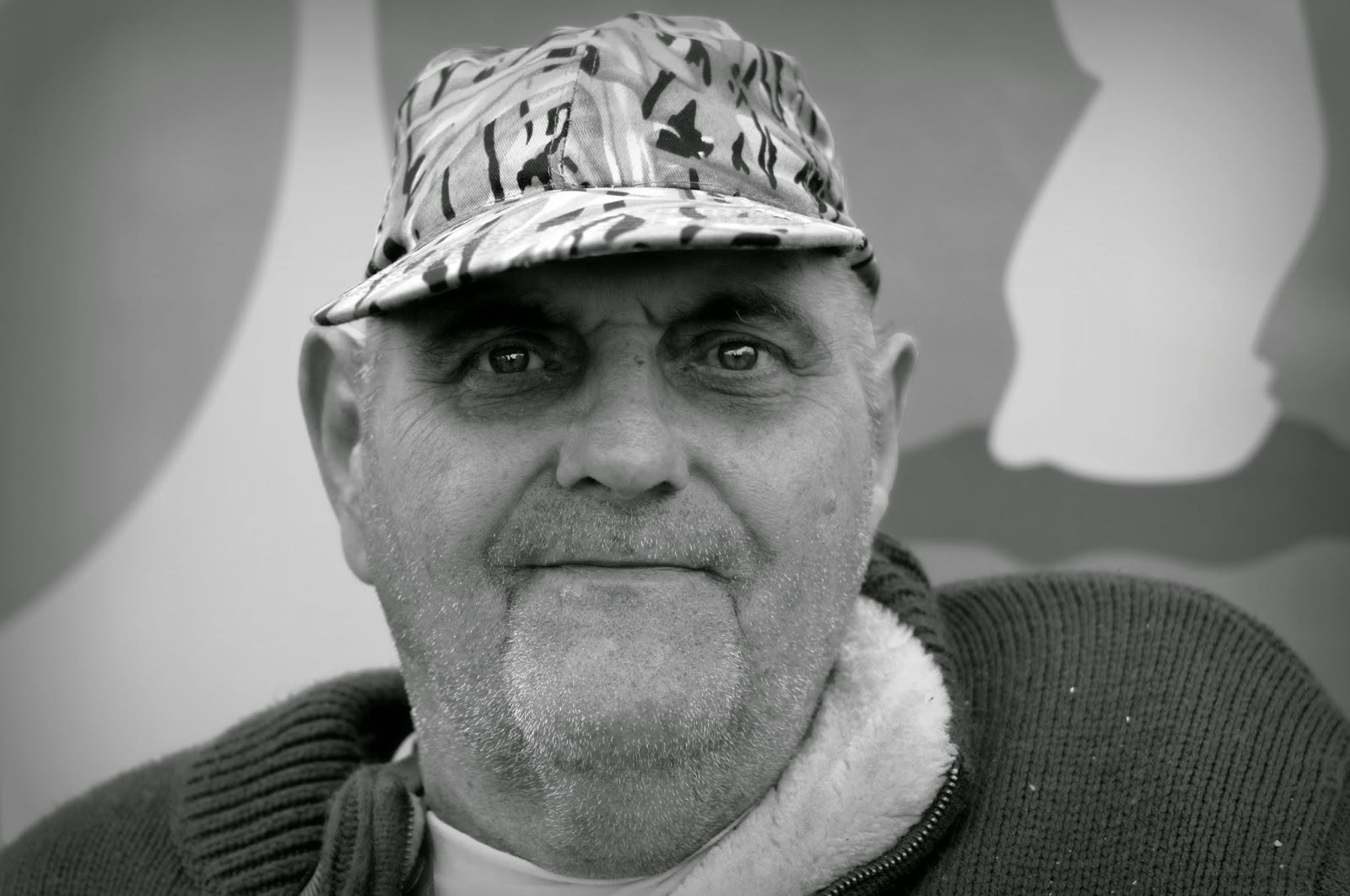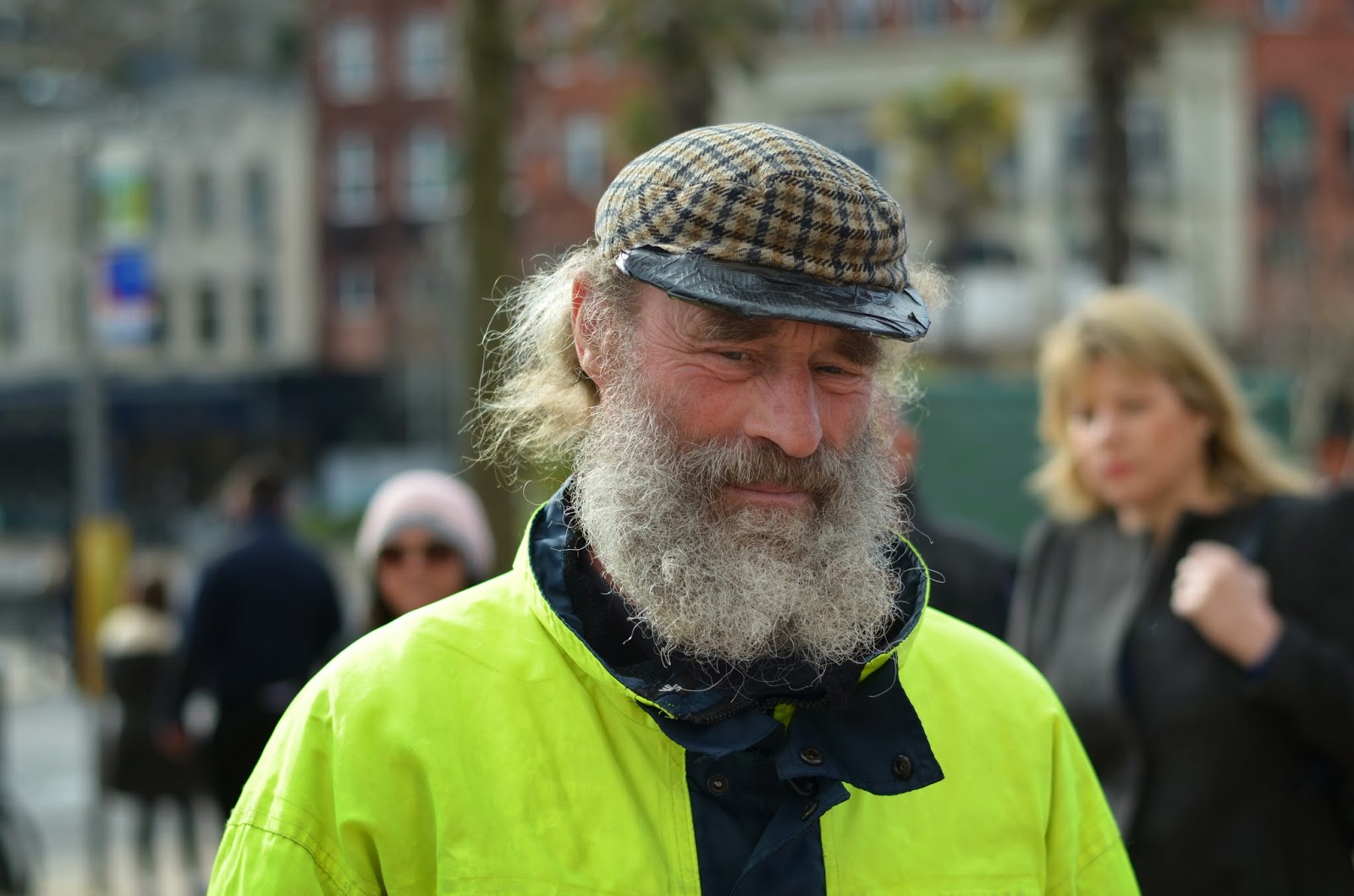Throughout this exam unit I have been taking photographs of homeless people, animals, and a family member to represent the relationship between Eyes and Emotion. I believe to have met my intention, which was to create a series of powerful images representing different kinds of emotions between different subjects. I am very happy with the results of all five of my shoots, for example, the shoot containing the puppy dog is by far my most powerful, as I have really managed to capture the emotion and feel a connection between me and the animal through a camera lens, which I believe is incredibly well shown in my photograph.
I trust that the majority of my shoots did in fact work. Shoot 2 for example, was a shoot where I tried various different editing techniques to further develop my image, until I was happy with the final product. For example I created a motion blur on the people encompassing him, to give the image an ephemeral feeling. By this I mean that the people around my subject are so busy running around focusing on their own lives they forget to appreciate the sonder, which my subject is no stranger to, as he lives his daily life on the streets, rather than being part of the fast world that we now live in. This is the storyline I was aiming for, and I believe that using my editing techniques I managed to create an effect that really emphasised it.
I am, however, displeased with my fifth and final shoot. No connection or real emotion is present, it is far too staged in my opinion. I believe that I could have improved this had I used a different subject, one who was a stranger to me, rather than my brother. Using my brother meant that as the photographer I acted far too casual (for lack of a better word) with my subject and so I didn’t manage to create a more emotional atmosphere as I did with my four prior shoots.
For my final piece I am using all five shoots, a total of ten images each with different subjects. The way I am planning on mounting them is as follows:
I will order 10 A4 prints, one of each of my images. I will then stick together back-to-back the image pairs. Using an A3 card, I will fold it in half and cover the images. I will then cut out a section where the eyes are on the image beneath, so all that will be seen are the eyes of the subject. On the outside of the card, I will have four different emotions written out, e.g. happy, sad, sympathetic, annoyed. One of which will be corresponding to the image, the other three are just there for effect. Once guessed, the viewer may reveal the images and see the truth behind the eyes, and whether or not they guessed the subject’s emotion correctly.
Overall, I am very happy with how this unit has turned out. I am very pleased with all five of my shoots and I think that my work really does display the relationship between Eyes and Emotion.













































